The Japanese make Bonsai miniature trees by stunting real ones. In this case, the result of altering the natural course of things is pretty.
When government stunts the natural growth of things, the result is usually not.
It’s also almost always expensive, too.
A good example of both is ASS – Automated Stop/Start – and the 48 volt electrical systems being grafted (just the right word) onto many new cars to make ASS palatable.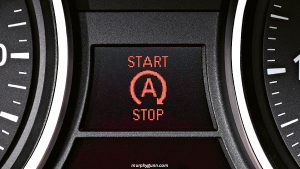
ASS is an engineering expedient, not a feature.
There was no market clamor for a system which automatically shuts off a vehicle’s engine every time the vehicle comes to a stop – as at a red light – and then automatically re-starts it (with a slight shudder as well as a slight delay) when it comes time to get going again.
ASS brought no tangible advantages to vehicle’s owner – and several disadvantages, among them the slight but noticeable shudder/delay at every stop/start cycle – as well as accessories such as the AC system that also stopped when the engine did, because such accessories are usually mechanically driven by the running engine.
When it stopped running, so did the AC.
Also, the heat – because the water pump, which circulates hot coolant which warms the car’s cabin stops circulating it when the engine isn’t running.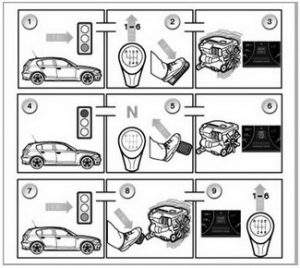
Finally, there is the definite cost – as opposed to the above intangibles – of the wear and tear on the starter battery, which was never meant to handle such abuse.
Italicized to make the point.
The 12 volt starter battery almost all new cars have (the reason for that italics will become clear shortly) was designed to start the engine a couple of times or so each day. Not a couple of dozen time each day.
Here’s why that’s a problem:
The 12V battery starts the engine; the running engine recharges the battery – via the alternator, which also produces electricity to run the car’s electrical systems, such as the headlights, windshield wipers, stereo and the fan that blows warm or cold air into the car’s cabin.
Once the engine is running, all of the car’s electrical requirements are met by the alternator.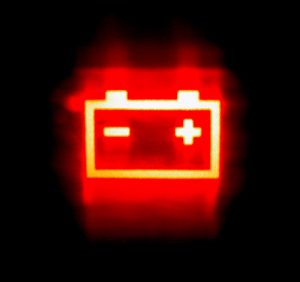
While the engine is running, the battery recovers the charge it lost to start the engine. After the engine has been running awhile, it is fully charged up and ready to start the engine again.
But when the engine is regularly cycling off, the battery hasn’t got time to fully recharge – as no electricity is being generated by the not-running engine.
Then it is expected to re-start the engine.
In the meanwhile, at every stop interval, charge is being sapped from it to power the car’s still-on electrical accessories, such as the headlights and windshield wipers.
All of this is very hard on 12 volt batteries and that shortens their useful life. While the cost of buying a new battery every three or four years rather than every five or six isn’t great, it is high enough to negate the minuscule fuel savings – about 1 MPG overall- achieved by ASS.
That 1 MPG is an irrelevance to the car’s owner – especially when the cost of fuel is at its lowest ebb in decades. No one except a fuel fetishist would ask for ASS – pay extra for it – to save such a tiny amount of gas, especially given the unpleasantness of ASS. The constant shudder of the engine turning itself off and then back on, with that slight but definitely noticeable delay in between – which is aggravating to people who do not like delays.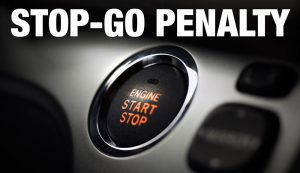
Especially unnecessary ones.
But the delays – and other costs – are very necessary if you are a car manufacturer who has to achieve compliance with the federal fuel economy fatwa known as CAFE (Corporate Average Fuel Efficiency).
Uncle loves ALL CAPS acronyms; it gives heft to his edicts.
Well, one way to “save” gas is not to burn any. Enter ASS. Shut off the engine as often as feasible. The “savings” aren’t much per car, but CAFE compliance is calculated according to “fleet averages.” The 1 or so MPG ASS “saves” per car is factored over all the cars of its type built in a given year – and so is a significant savings . . . for the car company, in terms of compliance with CAFE.
ASS also makes it feasible to not have to further downsize engines – or reduce their power output – to achieve CAFE compliance. This is important from the standpoint of complying with customer needs and wants – which compete (and conflict) with the demands of Uncle.
But ASS has its costs, as detailed above.
The fix?
Quadruple the voltage. Use a 48 volt electrical system to power a very high-torque starter/motor/generator, capable of near-instantaneous restarts, without the paint shaker effect of the 12 system. Power all of the formerly engine-driven accessories – the AC compressor, water pump and power steering – electrically.
So they never cycle off.
So people don’t notice a reduction in cooling (or heating) when the engine is off. And most of all, they no longer notice the engine shutting off.
Or coming back on.
These 48 volt systems are almost invisible. I recently test drove the 2020 Mercedes GLE 450, which has it (reviewed here) as well as the 2019 Ram 1500 (here) which has it too.
In both cases, ASS is no longer objectionable – in terms of operational unpleasantness.
Expect to see more new cars with 48 volt systems, not just the high-end ones like the Benz GLE.
Because almost all new cars now have ASS.
However, 48 volts – and the other gear that comes with it, such as high-torque starter/motors and (in the case of the Benz) a lithium-ion (rather than lead acid) battery to store all that juice – doesn’t come free.
Either up front – what you pay for the vehicle – or down the road – what you’ll pay to repair the vehicle. Bet your bippie a 48 volt Li battery will cost more at PEP Boys than a 12 volt battery. And while you may never have to replace a drive belt – if accessories are driven electrically – you may pay a lot more than the cost of replacing one of those to replace the high-torque starter/motor/generator rig, in part because you will probably have to pay a pro to replace it.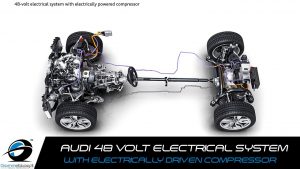
A backyard DIY job this isn’t.
As a way around ASS – which we’re afflicted with because of CAFE – these 48 volt systems are pretty cool.
But cool isn’t free, either.
All to save a couple of MPGs – maybe – at a time when gas is cheaper than it’s been since 1965 – and the oil from which it is made more abundant than anyone ever imagined.
Expensive, complicated solutions – for a problem that doesn’t exist.
That’s Uncle’s “bonsai” tree: A gnarled and crippled thing which isn’t even pretty.
. . .
Got a question about cars – or anything else? Click on the “ask Eric” link and send ’em in!
If you like what you’ve found here please consider supporting EPautos.
We depend on you to keep the wheels turning!
Our donate button is here.
If you prefer not to use PayPal, our mailing address is:
EPautos
721 Hummingbird Lane SE
Copper Hill, VA 24079
PS: Get an EPautos magnet (pictured below) in return for a $20 or more one-time donation or a $5 or more monthly recurring donation. (Please be sure to tell us you want a sticker – and also, provide an address, so we know where to mail the thing!)
My latest eBook is also available for your favorite price – free! Click here. 




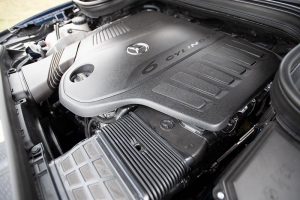








The whole mess reminds me of a quote from the late Harry Browne, Libertarian Party candidate for President several times.
“Government is a man that breaks both your legs, then hands you a pair of crutches and says, ‘See? If it wasn’t for me, you wouldn’t be able to walk.'”
Government can’t fix things; it can only distort things that already exist. Just like what it would do to that bonsai tree.
Eric, I’m replying here at the top of the list for one reason; this one has generated a lot of debate, which id good, but I think most are missing the point that ASS is merely another GovCo control device forced into service under the auspices of saving energy. The whole point here ids that Uncle continues to thow all manner of garbage at us for the sake of “order and control” rather than having an actual overall NET benefit. Most, if not all, of the technocrap mandated into automobiles is unnecessary for a competent driver. At the same time there are appealing aspects which, under specific circumstances, could make each of these items desirable. However, individual exceptions are not, and should not be a blanket policy for all vehicles and drivers. This goes for airbags, seatbelts, carseats, rollover pillars, backup cameras, lane assist, auto-braking, etc, etc.
Ass is, in fact, contrary to driving norms established decades ago by practice, not mandates. It does, however, fit right in with the present policy of “obstructing” traffic flow in an attempt to make automobile operation more frustrating and less desirable, to say nothing of “less affordable”. Improving traffic flow with synchronized traffic lights isn’t done because it IS effective at improving traffic flow, something that GovCo doesn’t want. Every time a REAL problem has a solution, GovCo (at any level) feels threatened with obsolescence, which would limit them to their original function of managing mundane shit they don’t want to.
All this GovCo “involvement” is the same as if a hotel manger were to stand in the hotel kitchen telling the chef how to cook and run the the kitchen staff and meal preparations, it’s meddlesome, unwanted, and in many cases extremely detrimental to the operation. I honestly believe all this micro-managing is meant to keep the public in constant chaos and indebtedness so we don’t have the time, or ability, to put GovCo’s illicit activities elsewhere in check. Divide and conquer folks, its being done right now, and most people don’t even see it!
Just rented a Ford EcoSport for work. Had to run down to northeast Georgia from Columbus. 500mile+ trip each way. Lots of traffic lights thru the mountain towns on US23. After a few tries, I found out when you left foot the brake, just touch lightly the accelerator pedal with the right foot. Yes, a driver’s ed non-no but engine never shutoff. Case closed, but not smart for snow and ice.
My company rig, a 2015 Ford F150 has ASS. I used to have to push the over-ride every time I started the truck. For some reason, it never shuts off the motor anymore at a stop sign and I don’t need to push the override. It has an original battery and maybe it’s detecting a weakness. (No check engine light) This makes me think that a hack could be made to keep a car with ASS from turning off as a default.
There is one more safety issue with a switch to 48 VFC electrical systems on cars. The higher voltage can be VERY much more dangrous in its own right. With 12 V systems, its near impossible to get shocked, though one can manage to create soe Fourth of July Excitement if careless enough to cause a direct short to ground. But one can grab on to both posts with one’s hands, and feel nothing.
48 volt systems present a HUGE increase in shock hazard. I’ve worked them in marine and forklift/power equipment. I have to be on high alert when testing live, and super careful when dropping the ground connexion off for service. Forty eight volts with the amperage behind it such a system has can blow holes in body panels, fry other stuff, pop twelve guage wires like a low amp fuse.
Only guy I ever heard about ever got directly hurt by 12 VDC system was a crazy barefoot hippie guy who got hisself all likkered up, decided it was time to go home, went out, and could not start his old Chevy pickup. Tried different things, his language increasing in “colourfulness” the whiles… until he finally got pissed two ways at once, went out, opened the hood, climbed up onto the bunper, (remember when you could DO that?), unzipped, pulled his willie out and began to drain it. In due course he happened to hit the positive post with the stream….. I was not there, but the accounts I heard were not pretty to imagine…… as I recall, he found someplace there to park his limp body for what little remained of the night. That Failure To Start may well have saved lives that night. He was, by all accounts, quite sauced.
Mercedes mechanics better hit up Snap On for insulated tools.
I deal with 48V power in my job. Not exactly as dangerous as 110 (I can work on it even though I’m not a licensed electrician), but you need to respect it. You check for voltage, then check again. Maybe once more too. Tape off breakers. Pay attention. It ain’t coax or fiber for sure.
12V car batteries will cause problems when shorted to ground too.
P=VI
The idea for 48V systems is reduce the current draw. The power stays the same. High current low voltage has a variety of safety concerns. 48V is barely enough to cause a very mild shock. All the same fuses that protect against a short will still be there.
The issue with a 48V system would be the battery chemistry and the nonstandard battery packs. Jump start issues as well, because of again, battery chemistry. The voltage compatibility issue with existing infrastructure can be dealt with using hardware. 12V jump points could be installed.
The 12V lead acid battery could also be used to power a 48V system. Again, it’s a matter of changing the voltage with hardware. If I were laying out the car that’s what I would attempt to do unless something precluded it. In the MB case its likely that the electric motor assists. In which case it couldn’t use a starter battery regardless. Then again a deep cycle lead acid battery is still far more standard than li-ion battery packs.
Here is another one…..the electric Parking Brake Garbage. Service a 2018 Civic SI Turbo 6-speed manual, today.You must hold the brake pedal down while activating the P-Brake Switch, car on or off either one. To release, however, Engine MUST be running and in neutral, or clutch in, AND hold the Brake pedal in, to release, period. If the engine won’t run, then what, for me the mechanic? I’m fucked, apparently, but who cares, because this prevents a child from releasing it with the little finger-switch. This safety cult is screwing everybody, no ifs, ands, or buttholes!
And since it’s all electronic, it’s no longer an “emergency” brake; a purely mechanical backup for when the hydraulics go to shite, but just a way to keep pressure off the gearbox when parking off a hill.
A “possibly better” alternative to ASS (very appropriate name) would be to shift automatic trans into neutral whenever your feet are not on any pedal, and shift trans back into gear when foot is placed on brake or accelerator pedals. The reason I call it a “possibly better” alternative to ASS is that people would have to change their driving habits for this approach to work – it takes advantage of coasting, and drivers now do not do that, tending to do more of the constantly on the gas, or on the brake style of driving.
Ha, I have done that for decades, but have to be careful because some cars don’t respond like you think. I drove a customer’s BMW, and I stopped at a light in Neutral, like I always do. Light turns green and I let the car start rolling on its own to get going,then I go to put it back into drive……No Go! The dumb-ass BMW has a
shift lock in Neutral, and you must Brake-And-Stop to shift into drive, Fuck Me! People behind me were NOT happy, and here I am being the textbook “prick-in-a-BMW” through no fault of my own! BMW and many other cars are purposely built to condition you to “lazy-ass-dumb-shit” driving habits, so just beware!
Junk that will fail is an incentive to go with a manual gearbox.
I try to time the lights so that I do not have to go from a hard stop. The race to stoplight crowd gets annoyed with dawdling to the light but I pass them easily while they accelerate from a full stop. Perhaps a few of those behind my annoyance get the point of the exercise to conserve brake and fuel to get there faster.
I do the same thing, and I EASILY get 50,000 miles out of my brakes! Why use up your brakes when you can let the forces of nature slow you down? If I have to stop, I only need a gentle tap on the brakes.
bought my Ford one ton van (Powerstroke) seven years old with 130K on the clock. Original pads were down to about twenty percent, but I left them due to the stress of just buying the van. I replaced them, same discs not even turned, at about 150K. That set lasted till the 320K mark, at which poing, having the cash available and my partshouse having a sale, replaced the front discs as well. Now at 355K, the pads still look like new.
I always use trailing throttle and engine brake up to the signals, in light traffic dawdling plenty so I don’t have to launch that four tonne monster from a dead stop. ANY forward motion is a plus.
The torque convertor in those rigs with the diesel is a relatively high stall speed, and the drag at idle is so slight I cannot even feel it when shifting from N or P into forward gear. Engine quickly gets up “on the cam” thn pulls like a team of racehorses all the way up the RPM range. The high stall also provides SUPER delicate throttle control, very useful for tight spaces, hitching up trailers, pulling others out of the muck. My fuel mileage started out at 18 mpg highway maybe one less in heavy town traffic, then they “reformulated” the fuel and its dropped one full mile per gallon since. I don;t accelerate away at high throttle, either, I use maybe one third and just let the gearbox take the speed up whilst keeping the engine tuning steadily, staying well within the sweet spot on the cam. I’m very pleased with the fuel economy considering the workhorse mode I’m always in. I’ve towed HEAVY trailers at the same time as a heavy load inside… GCW as much as 27K. Crazy thing still cruises at 65 at that weight, and returns 14 or 15 mpg heavy.
But I cannot imagine a start stop system on that thing….. nor would I tolerate the nuisance of one not even considering the ridiculous cost of serving such a system WHEN it WILL fail. And I seriously doubt I’d see even one mph improvement if it had one. Diesels burn almost nothing on the tickover anyway, especially with the high stall torque convertor fitted to these.
I have a question for the doofi pressing these stupid startstop systems: HOW”S about fixing the traffic signals such that, as one travels at the posted speed limit, the lights ARE ALL GREEN so no one has to stop every block to wait for another insanity of a traffic light? Hunhhh?? Instead of ONLY saving about one mpg by shutting the engine off when I’m trapped yet again, my guess is I’d save maybe FIVE mpg in heavy town traffic by not HAVING to stop in th first place. These traffic “engineers” are frauds if they can’t figure that one out. After all, aren’t then all on about saving the planet by reducing “carbon impact” when they decide we’ll all switch off our engines rather than leave them at the tickover? Since they REFUSE to synchronise the traffic lights when I KNOW they CAN, I cannot buy into the meme that its all about the planet……
Richmond VA has had most all of their signals synchronized to keep traffic moving, for at least 50 years. In the 80’s, I could drive Broad St from one end to the other maybe only stopping once if I went a little faster than the timing, which was set to keep traffic about 25-28 mph. Main St. was the same for about 80% then the other 20% past Belvediere. They aslo still use and maintain light fixtures that have been on the street corner posts for at least 80 years. 80% of Main St has been one-way for 50+ years, and they still have the post-lights working in all 4 directions even, lol! If a half-bankrupt city like Richmond can do this, there is no reason others cannot, they just choose not to bother. Traffic congestion is frequently used as a convenient govt. excuse to control and increase taxes, without ever actually solving any problems.
@gtc – I am suggesting that this be done automatically by cars, instead of having to do it manually.
@Erie – race to stoplight crowd – good term. I’m guessing so they can get back to texting or whatever they are hurrying to get stopped for.
Any time the engine stops without the driver intending to turn it off, it can be dangerous. Considering some of the neighborhoods I have driven in, instant response and reliable running are essential to staying alive. When a faulty sensor causes a computer to seize control from the pilot and fly the plane into the ground, as happened in Indonesia and Kenya, hundreds die at a time, and people notice. One or two fatalities here and there from automobile quirk-shit glitches will not make the news unless someone starts putting the stories together. Boeing, at least, will probably be allowed to correct the problem once it is confirmed. GM/Ford/Fiat-Chrysler, et al. will not be.
Hi Patrick,
An excellent point. I used to work – or have to drive through – one of the worst parts of DC, in the middle of the night. The engine cutting off would have been a non-starter (forgive me) and I’m grateful such idiocies did not abound when I had to work there.
Will carjackers discover the trick of standing in front of cars with automatic braking?
It’s likely that the intended consequence is to up the cost so that electric and hybrid cars can compete. With ASS, a hybrid makes more sense if the price is the same. At least there should be no hesitation on start from a stop. I think a hesitation would be quite dangerous, as when an in a hurry driver sometimes guns it to make a left ahead of on-coming traffic. If it stalls, it’s all over.
BTW, speaking of hybrid, what’s the opinion of the Israeli engine the Aquarius recently profiled on LRC. It would seem to be a better hybrid engine. Also, I heard of an Australian company with a zinc bromide battery that claims to not have the dangers of li-ion.
Eric,
Glad my ’18 F-150 5.0 has the disable switch on the dash. And, the ASS seems to be automatically disabled when towing, which is the primary use for this truck. Have to look at the manual. Didn’t know about the 48 volt system in the ’19 Rams. Looked at the ’18s but they didn’t have the options I needed. For me it’s a small sacrifice to still be able to still get a decent V-8 in a pickup truck. And glad it’s a 12 volt system. Thanks for the very informative article.
Vic
PS- What else aren’t they telling us about new vehicles? Like the MCAS on the 737 Max. Yikes!
The Ford truck auto stop/start is disabled by towing. There are things sold to plug in to make the truck think it’s towing something to disable it. Which is probably bad because there are likely other things that the computer changes when towing. The real solution is a jumper wire across the off switch terminals so it doesn’t have to be manually pressed each time.
I’m doing the jumper wire thing to mine this weekend.
Thanks for the confirmation Brent.
Test drove a new Land Rover to replace an aging LR3, damn thing shut off at a stop light and the fucktard salesman said it’s a new feature in all Land Rovers. We bought a Suburban instead (no ASS but lots of stupid popup messages on the dash). Looking to buy a new sports car in the future but hearing that the AMG GTR also has this idiotic feature makes me think buying an older one might be a better idea.
Hi Peter,
You can still avoid ASS in a new car… just shop for one with a manual transmission. They haven’t yet figured out how to incorporate ass with a clutch!
Manual isn’t even an option in many vehicles anymore.
My manual transmission Ford Focus RS has ASS.
It’s not too awful, though. It only turns off the engine when fully stopped, clutch out, in neutral. The moment I touch the clutch to start moving, it starts the engine. It’s started before the clutch reaches the end of its travel. The downside is that the engine is a little hesitant for about a second after restarting, and the car is easier to stall during this time.
Thanks, OP …
I haven’t yet encountered ASS in a manual equipped car; sigh. I thought that was still an out.
I experienced this first when I rented a car in Europe last year. It was a manual transmission, so the ASS would restart when you pushed in the clutch pedal. Fortunately, over there they give you a yellow light BEFORE it turns green. I could push in the clutch when the light turned yellow, and the car would be started and ready to go when the light turned green. Traffic circles, however, were a PITA because sometimes I would have to stop just long enough for the car to quit on me.
Not to mention all the resources, including energy, to manufacture the more complicated 48 volt systems and accessories to go with it. That will likely negate any fuel savings, in environmental terms, over the life of the vehicle. Especially if they are primarily highway miles.
Good writeup on the minimal MPG return from this requirement. However, one thing not mentioned that continues to push this as a design feature (“feature”?) is the perceived impact on emissions. I have read that idling vehicles are a significant contributor to emissions, and that this was intended to cut down on that.
https://www.nrcan.gc.ca/energy/efficiency/communities-infrastructure/transportation/cars-light-trucks/idling/4415
The last non-hybrid vehicle I owned (a 2002 Volvo S40) did not have this feature, so I cannot make any observations about the “lurch” or “shudder” some owners report. But I have owned two hybrids (a 2006 Honda Civic and a 2017 Toyota RAV4), and the stop and restart in those is as smooth as glass. I am less familiar with the Toyota, but the Civic is a series hybrid, with its motor-generator windings on the flywheel. These are connected to the hybrid battery (rather than the “accessory” battery), and the flywheel motor and hybrid battery are used for restarts, rather than the “accessory” battery and starter. This design feature seems to work well in the hybrid.
However, as noted here and in many of your earlier articles, there is a lot of “leakage” from hybrid to non-hybrid design, and most of these features that fit in quite well on a hybrid vehicle have obvious drawbacks when implemented on non-hybrid platforms.
Hi Willem,
Yes, one of the arguments given in support of all this is “reduced emissions.” But emissions – the actually harmful ones, I mean (not C02) have already been reduced to near-nil. We are talking fractional differences – at great cost. And this includes the cost of vehicles that are more energy intensive to manufacture and more disposable, because of their high cost to repair vs. depreciating value.
for 45 years I have heard conservatives bombard communists with tons of pure indisputable facts AND IT NEVER MADE A DIFFERENCE. time for a new strategy but without lead being involved I don’t know what it is
you are not talking about developing new battery technology using that lead, are you?
Eric, – look at the flip side here. Here in the UK, JLR has announced this kit on its new Range Rovers (because you know someone who buys an £80k car worries about spending a £1 per litre on fuel)…. But from what I read, there is also an option for this new ASS system to actually empty the 48V battery to the motor and give extra horsepower for a couple seconds, say when you are accelerating from a stop.
Now say driving through a city when you get every signal red or roundabout, and floor it every time (which people who buy performance cars may do), the battery drains and then when you are at the speed limit revs a bit extra to re-charge. In the end – the result would be WORSE fuel economy in the real world (rather the without all that kit)!!! Again, Uncle thanks to the brilliance of uncle, they have achieved exactly the OPPOSITE of what they intended!!
“Again, Uncle thanks to the brilliance of uncle, they have achieved exactly the OPPOSITE of what they intended!!”
ALWAYS.
That should be the definition of government.
Hi T,
I disagree the results were unintentional. I submit the object of the exercise is very intentional – and that object is to render cars very expensive throw-aways.
also the engine works a little harder when the alternator is running at full sail trying to charge the system
So what keeps someone from driving into a parking lot or driveway and stopping, and then the engine shuts itself off, and then the driver just gets out and walks away forgetting to really actually turn off the car?
Won’t all the accessories keep going and run the battery down, or maybe it will roll away because it’s not in Park and the automatic braking eventually cuts loose because the battery is dead ????
My Jeep’s ASS only works when the vehicle is in drive. This causes the strange behavior of pulling into a parking space, engine stops, put gear selector in park, engine starts, then shutting off the engine. Thank goodness they include the override button, which is now just part of the starting procedure.
Yeah, but what about if the driver just forgets to put it in Park, and walks away?
No key to remove because it never left your pocket.
As soon as you let the pressure off the brake pedal the engine starts again. If someone did it they’d probably blame ASS but the reality is the ASS in question won’t be the engine management system.
Personally I thought the expense of electric motors and the power draw of AC could be the only reason all accessories weren’t already powered electrically. But they stopped at fuel pumps and electric cooling fans. Start and stop may not make sense but electric accessories. do. They can then be located in places that are easy to service. They no longer even need to be in the engine compartment. An electric oil pump could build pressure before the engine starts. That and an electric water pump could cool critical components after engine shutdown. Lots of possibilities and advantages.
Stop/Start doesn’t make sense though.
I agree with you, electric accessories are better on an engine than most of the mechanical versions- minus the stinky ASS. You can instantly tell if an electric water pump or oil pump goes bad by a simple voltage check via an ECU and kill the engine before any damage occurs. 48 volts is far better too for an electrical system as it doesn’t suffer from connection impedance due to corrosion as badly as 12 volt over time aside from the fact you can use thinner wires.
Hi Yep,
I’m ambivalent about 48 volt electrical systems. I understand an electric motor is a simple thing and that you eliminate a hydraulic circuit, belts, etc. But, which costs more and which is more complex?
Consider electric fuel pumps. Very simple, but they tend to cost much more than a mechanical fuel pump – in part because they are often part of an elaborate “assembly.” Cars like my old TA (’76 Pontiac) had a $30 mechanical pump bolted to the side of the engine; two bolts hold it in place. R&R by the side of the road, if need be, with hand tools in 15 minutes.
My modern Nissan pick-up truck has the usual in-the-tank-electric pump; it is part of an “assembly” that costs several hundred from Nissan, although one can get an equivalent reproduction for about $100. However, one must drop the gas tank to replace the pump. It’s not a technically difficult job, but it is a PITAS – and can’t easily be done by the side of the road.
Where will the electric water pump be located? Bet it’s buried in a not-easy-to-reach place inside the engine.
What is the cost of the 48 volt battery vs. 12 volt?
Put simply, what is the gain?
I understand that all the electronic gadgets in cars draw a lot of power – but those gadgets are of slim to no interest to me. I know, of course, that lots of other people crave them – and that is giving impetus to the 48 volt thing…
I am wondering that the jolt of the motor stopping and starting so much could also put more wear and tear on the motor mounts. With FWDs having up to 5 or 6 mounts, these mounts can get quite expensive to replace more often.
Hi t05,
The 48 volt re-start (I have tested several now) is very smooth; I doubt it has any meaningful effect on the mounts, though it may. My beef is with the needlessness of ASS, the needless complexity and cost. All of this is demented. It’s as though there is some dire and imminent threat which requires radical measures right now.
Except there is no threat. Gas is cheap and plentiful.
It’s not unlike anorexia. The person looks like they’ve spent a year at Treblinka, but still insists they need to lose weight!
Eric, just a word on replacing those in-tank fuel pumps if you ever have to do it. On some of the small trucks it’s easier to take the bed off than it is to drop the tank. There’s usually only about a half-dozen bolts holding the bed onto the frame rails, and two guys can effortlessly pick it up at the wheel arches and set it on some sawhorses.
I’ve also heard that in some systems, particularly those with plastic fuel lines, it is possible to rig up an in-line electric pump under the hood as a temporary expedient when the in-tank pump fails, but I’ve never personally done it.
That’s pretty much standard procedure even on full size pickups.
The problem with hooking it up an inline pump like that is the automaker specific fittings. There’s kludgy ways around it, but then there are the odds of a pressurized gasoline leak as a result of doing them.
Nah….. the special fittings are readily available as spares for most, and anyone with a reasonable level of skill can fit a fuel pump nd have it seal completely.
One frequent cause for in tack pumps going south is that the stupid fine mesh plastic screen cosk gets plugged with corrosion, much, etc and starves the pump for fuel, which is often used as a coolant for the pump itself. The extra work drawing against the pcked screen overheats the motor in the pump, and failure results. That’s why nearly every new pump includes a new sock. This is also why the idea of simply putting an inline pump outside the tank may not be full cure. In cases where the silly sock is compromised the new electric pump will be drawing against a severe restriction. If it can develop the feed pressure against the high vacuum from the clogged sock it still will be unlikely to maintain that pressure atvolume, and both are critical to todaus fuel system.
Better to drop the twnk, remove the offending pump, jury rig a dip tube that will reach the lowest part of the tank, perhaps fit a coarse wire screen to keep big chunks out of the line, then fit an inline pump downstream of the factory fuel filter, drawing through the filter, not pushing through it.
Hi T,
I still prefer the mechanical pump – and carburetor. Simple, effective. Cheap. Going to EFI does improve cold start and it’s lower maintenance in the sense that regular adjustment isn’t necessary. But when when repairs are needed, it’s often not roadside fixable (you are stuck) and it’s usually time to start replacing parts, many of them expensive. This includes the computer (ECU) which controls the works. A computer isn’t needed to run a carburetor!
I’ve found that a carb with a good working choke will more likely start in really cold weather, but then it takes forever to warm up enough to drive. The EFI just seems to take more cranking to figure out “oh my god I need more fuel” in order to start, and sometimes a bit of pedal helps, but then you can pretty much drive away right now.
In tank fuel pump replacement is a factor of how the car is designed. In the mazdas I’ve had all it takes is to pop out the back seat bottom, remove a small cover, disconnect the hoses, remove the screws holding the pump, remove the pump.
Also an electric fuel pump does not have to be in the tank either. Automakers choose to put it there for assembly purposes. It takes more labor to put it somewhere else. Also it would need to be more stout because they use being immersed in gasoline to stay cool. Again, cost. There’s no reason it can’t be somewhere else besides being cheap about it.
On my old Jeep there is an angled part of the tank and the pump plate is located there so you can get at it without dropping the tank. It still looks like a pain to reach up in there behind the rear axle but I guess it is do-able.
Dropping the 40 gallon tank on my old Suburban wouldn’t be such a pain except for reaching the pressure fittings. You have to let the tank down carefully just a little bit in order to reach in over the frame from the wheel well. Why they couldn’t have put a union downstream a foot or two is beyond me. The pump wiring has a pigtail and nice connector near the frame that you easily unplug, as well as test to see if power is going to the pump.
“The pump wiring has a pigtail and nice connector near the frame that you easily unplug, as well as test to see if power is going to the pump.”
You can check that at the relay. The relay has a schematic printed on the side of it in the GM vehicles I’ve diagnosed. Some guys cut a door in their pickup truck bed to access the pump assembly, and some prefer to unbolt the bed, which ain’t an option in your Suburban, but it makes it easier on pickup DIY’ers who don’t have a lift.
The fuel pump in the tank deal is proof that there are some real ringmeats involved in design.
Assuming you can find the relay – duh!
Run a hot wire from the battery, hear the pump running, and now you know the damn pickup tube has fallen off of the pump, AGAIN.
Forgot to mention the in-line filter along the frame was already removed, so pump running and no fuel coming out.
“Also an electric fuel pump does not have to be in the tank either. ”
Yep!
Call China, ask them!!!
” But, which costs more and which is more complex?”
I’d wager that as production scales ramp up you might find electric motor replacements of mechanical systems should actually end up lower in costs over time. I could be wrong though, time will tell all as usual.
I feel for your electric fuel pump pain, but as already mentioned that an issue of car design, not the nature of electric fuel pumps as they could just as easily be put in the engine bay instead of the fuel tank.
Think about a high revving motor as the wear on the mechanical water pump, a/c pump, etc. at high rpm’s versus a steady state electric driven system that didn’t care what the motor rpm’s are(aside from parasitic loss)- there’s a lot of positives to electric motor accessories as opposed to mechanical from a purely operational standpoint. Your point in cost is well made, but as scale takes place that could flip-flop.
It reminds me of the move from 6 volt to 12 volt.
Agreed, Yep…
The big fly in the soup, though is the 48 volt battery. I bet the one in the Benz costs low four figures….
eric, here’s a ditty by AutoWeek or when I quite them, Auto every other Week. https://autoweek.com/article/technology/48-volt-systems-are-bringing-more-power-and-better-fuel-economy
And to get a price or two: https://www.electriccarpartscompany.com/48V-512V-576V-Custom-Built-Lithium-LiFePO4-LFP-PCB-PCM
Just one more reason for me to find an acceptable ’93 Turbo Diesel pickup. Oh, it has two batteries and Optima’s like I used aren’t cheap but they lasted 8 years per set.
I have an old 2007 Prius. It is a different situation than a non-hybrid ASS, but similar in that the engine is frequently going off and on. If you are stopped the engine will “clunk” off as if it stalled, and lunge forward a bit when it starts! Its not only noticeable, its disconcerting at first. Just extremely annoying after I realized its not breaking down. (Twice of late I could swear that the car accelerated without input.)
I’m researching for a new (probably used) car. It won’t be Prius for various reasons but I do marvel at the dependability and engineering of the CVT and the rest of car in general. Maybe newer Priae don’t cycle as roughly? I dunno.
Disclaimer: I did not buy a Prius for any ethical, environmental, or other reasons concerning virtue. LOL
(Older person no longer driving, 70K miles, pristine condition, $5K – I could not pass up;))
Eric,
Is sounds like “The Unintended Consequences of ASS” are far fewer than the unintended consequences of ass.
STDs, marriage, divorce, alimony, children, child support, restraining orders, attorney fees, just to name a few.
God stuff, T!
At the moment, that form of ASS isn’t causing me too much trouble….
You got THAT right! As the old saying goes, if it flies, floats, or fucks, you’re better off renting…
Marky, an old adage I learned to be true. A boat is a hole in the water you throw money into. $600 for nearly anything….like a carb adjustment. I know, you, like I, probably thought you could adjust all those carbs yourself. Well, you probably could, given enough trips to water and enough time pulling it in and out and yada yada yada. Just hope you don’t get one leaned out and think it’s running mighty fine….until those 2 cylinders seize.
And as an aside, I’d say find you a good boat mechanic and stay with him, never bat an eye when the bill comes……..as if you can find one…..and there’s the rub.
Almost a perfect analogy. All sorts of downside with doubious benefits.
what a pain is the ASS
I have always maintained my vehicles. They have never failed me except once when a new fuel pump was defective. IMO the reason for the reliability was they have never seen the inside of a dealers service department except for recalls.
We purchased a new 1998 Regal which for some reason the air conditioning condenser just started to literally fall apart. Wifey took it to the dealer as it was still under warranty but brought it back home unfixed because the service tech had no idea where or what the condenser was. I replaced it….The car is still going 20 years later.
These new cars are so complicated they are gonna be dealer bait and once there they are gonna really rip you off. As for ASS. There are other incipient problems such as starting so many times with no oil pressure. Yes there will be some oil still there but it is entirely different then when pressured. Then you have the relays operating all the time. Went shopping one day with the wife. Counted 77 possible restarts if I had ASS. Most doing right turns when you creep up one car length at a time.
Most will just turn it off if possible. Which means they paid the big bucks for nothing.
I agree with you Ken, starting and stopping an engine is more than just stupid, it adds wear. And to internal engine components.
And why when I lived on the road, I stopped at 10-20 places a day, and would just leave it running all day, just locking the doors when I left it.
And I really didn’t have too cause I would get a new car every 60-80K miles anyway, but my brain wouldn’t allow me to do it for the poor next guy that would get my car.
Even had a few people complain to me, hahaha. ‘So turn yours off, I don’t’…
Sucks to be a mech engineer and have to think about crap like that……………..
Hi Chris,
The oddest thing about all this is how unnecessary it is; desperate “solutions” to a nonexistent problem. If gas were $5 per gallon (due to scarcity) I could see it… but with gas at $2 or so per gallon… it’s like rationing dirt, almost!
I wouldn’t care if gas was $10/gal. It’s just plain stupid to turn an engine off at every stop light.
Maybe your latest tech MB example above will make ASS much better, but why do we need $5K +/- in crap to make a couple mpg?
I know, because Uncle is demanding such. Actually it’s Uncle demanding that there be no more competition to the big boys that line their pockets.
I’m guessing that Asia could copy a 90’s engine for a fraction now. Can’t have that.
If “gasoline” wasn’t the Uncle Cornholio subsidized gas-a-hol shit that gets crappy mileage, the cars would already have 5-8 mpg better! This is a govt designed catch-22 so they can keep ass raping the public.
MAGA
Make Ass Great Again
More Ass Getting Agony…
MY Ass Gets ANALyzed (By the Gov)
ASS on my new-to-me F150 almost got me in a little trouble yesterday. I forgot to deactivate it, stopped at a busy intersection and the engine turned off. So i just want to creep up to take a left, and she restarts, i hit the brake again and I guess I fooled it, cause the engine dies and won’t restart. It took me a few seconds to figure out why it wouldn’t restart on it’s own until a warning message came up, and I realized i now have to turn the key again to restart. All while blocking a very busy intersection. And in NJ that’s dangerous, haha.
I always wondered how this would react to people to who do the stop light shuffle or are in stop go traffic. Your story answers that. I’m sure the wonderful people at Ford, GM, Dodge et al surely went through every traffic scenario for quality assurance with ASS. you know, making sure it wouldnt put people in danger.
and of course it wouldn’t restart without going back to park, while seeing if I was gonna get t-boned.
As usually for this ASS stuff, there are plenty of smart people out there who figure out how to defeat them. In a few minutes I easily found 3 ways to turn it off completely. Will be doing.
Im seeing the effects of these damn cars. Backed up traffic. Only three or four cars can make it through a green turn signal before it changes. Have to wait for all these damn things to restart.Or a red light. When green, only three or four make it through,Everybody just put put along.
Hi Anon,
Yes, same here. While the delay isn’t huge, there is a delay. The car does not immediately move (assuming the driver is prepared to move). There is that slight pause before movement. Factor that out over all the cars on the road with ASS. How much time is being wasted to “save gas”?
If you’re waiting at a stop sign to get onto a street with heavy traffic, or waiting to turn left across traffic without a green arrow, that small delay due to the ASS lurking in your car might be a significant safety hazard.
So, now that we live in the Future, we have 400hp cars that will do 0-60 in 5 seconds, but ONLY after you wait a few seconds for it to start itself again. WTF?
It’s not just the stop start killing throughput but teachings are now idiotic. Wait 3 seconds after the vehicle in front has left then start going. That’s what they are teaching.
The way traffic lights are and what they teach is fuel economy killing. Causes all sorts of congestion and wasted fuel.
Yep, I can see this will be a future road-rage fire-starter, just wait. And in NJ, they light up just for not moving fast enough, even at a red!
Here’s a 48V lithium iron phosphate (LiFePO4) battery:
https://www.bioennopower.com/collections/24v-series-lifepo4-lithium-iron-phosphate-batteries/products/48v-30ah-lfp-battery-pvc-blf-4830a
$1049.99. A bargain. DK if the 30AH size will be considered adequate for running your vehicle, but my guess is that it should be acceptable. Upside of LiFePO4 is that it will outlast lead acid by a factor of 10 (2000 cycles vs usually 200 or so for lead acid).
They’d be really, really stupid to use LiPO or other lithium-based technology even though it has much greater energy density. Too much risk for damage if something goes wrong and not enough advantage other than maybe saving a little space. I recently replaced a lead acid 12V battery with the 12V equivalent of above and I’m really impressed. But it cost me an arm and a leg and wouldn’t gain much of an advantage in a SLA application.
[ Upside of LiFePO4 is that it will outlast lead acid by a factor of 10 (2000 cycles vs usually 200 or so for lead acid).]
Considering ASS, I’m not so sure it (LiFePO4) will help much. Instead of 2-3 starts per day we’re looking at possibly a hundred (or more) depending upon traffic. Get into a traffic jam on a freeway for 10 miles for example.
IMO the ‘actual life’ of the battery may well be less than that of the lead acid.
Added to explain…..
I am comparing the two in the case of a car using a lead acid battery without ASS (old school) and the newer ones with ASS. I agree the LiFePO4 battery has more discharge cycles. BUT… You still may be replacing it every 4-5 years at a $1000 cost verses $150.
The 2000 discharge cycles is total discharges. A 50% discharge only counts as half a cycle, for example. Still, they will add up.